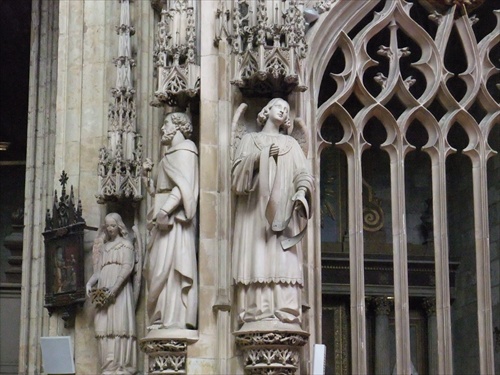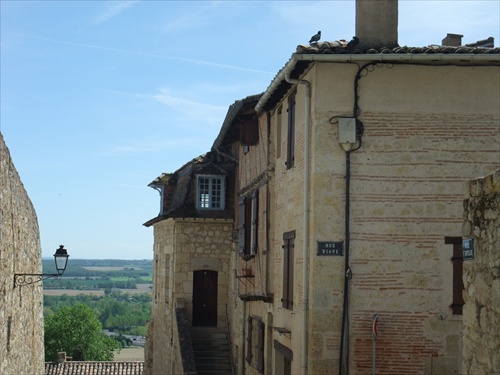
It’s the Nogaro cow-ring.
No, not the bull-ring, silly. The cow-ring
Here in the Armagnac area of Gascony, the bloody cows were whining about the glass ceiling and all that. A commission was appointed, quotas of females were made mandatory for the ring. Next thing you know, people said the cows were better at nurturing and multi-tasking than bulls, in a bloodless sport which was all about dodging and changing direction…
So now the marginalised bulls just go to the forest and hold men’s groups where they bond and do trust-and-fall and abseil and talk about their feelings over campfires.
Well, the story goes something like that. For the course landaise you need cows and human écarteurs – I hope they, at least, are male – who jump and dance and generally dodge the running cows. (I suppose when you follow Rugby League you can’t really look down on other people’s choice of sport.)
***
Nogaro was founded back in the eleventh century, by a future saint, with the idea that it would be a sauveté, a place where war was forbidden. Why didn’t the rest of us think of that?
The town did so well commercially that pilgrims were exempt from paying péage, the local toll.
Five centuries later, Montgomery and his protestants wrecked the place, but much survives of the yummy old Romanesque abbey of Saint-Nicolas. There’s even an original fresco visible in the church.



Here’s a fine example of a maison à colombages. It’s surprising how something that looks so temporary can last so long. There are many of them in this part of France, with many regional variations, of course.

Unique to Nogaro, at least on the Camino, are a number of twentieth century buildings that could have been old Sydney cinemas. I love this Wedding Cake style. Even the bull…I mean even the cow-ring was Wedding Cake.



The whining sound in the distance is from the famous motor racing track. So between cows, hot cars and rugby – this is the birthplace of Thierry Lacroix – Nogaro makes a good earn from sports.
The reason I decided to take a rest day, however, was the old Hotel-Restaurant where I stayed, right near the cow-ring in the Place des Arènes.
The new and youthful owners of the hotel were busy fixing it up, but at least for the first night I was able to get demi-pension, dinner-bed-breakfast. They were so welcoming and easy-going that I decided on two nights there, even though there were no other guests, and on the second night I would be the only soul at all in the place.
When the meal was proposed to me in the empty dining room, it was the ho-hum tourist food with which I was already familiar in Gascony: confit de canard, scalloped spuds, and an easy-serve ratatouille…
Except!
The duck was carefully crisped but moist, served with a classic simple brown sauce; the ratatouille was tender but consistent; and the potatoes were a perfect gratin dauphinois, neither sloppy nor dry, with just the ghost of a garlic clove floating through its light custard.
The owner, as it turned out, was an Argentinian with a love of French food and a determination to cook even the stock tourist stuff in a way it deserved. The boredom that, understandably, afflicts many a French-born cook who must crank out local-this and authentic-that, to a price and night after night, had not afflicted my host or his French wife.
As even a simple blogger knows, one can always put a nice finish on the commonplace.
The ho-hum can be yum-yum.
Read Full Post »





























































